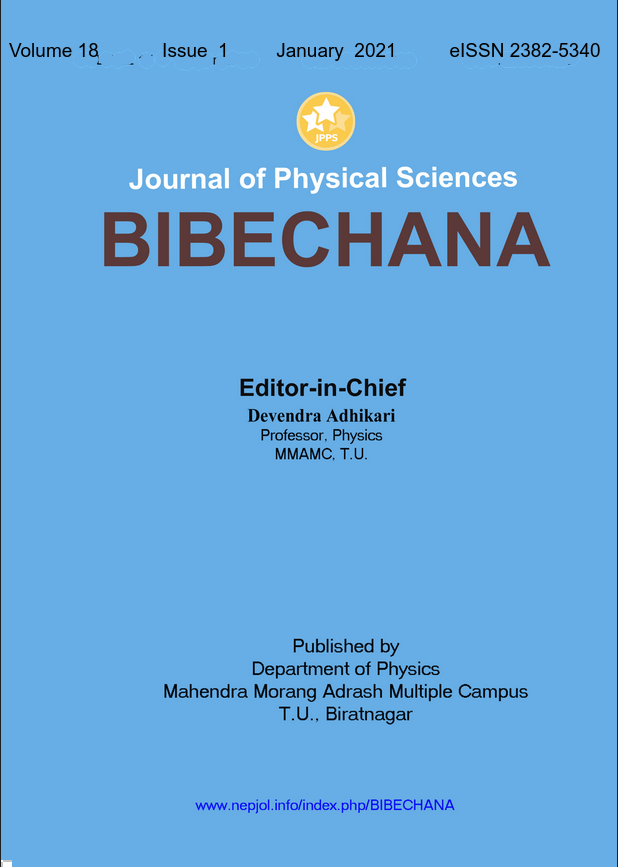Prediction of daily global solar radiation using different empirical models on the basis of meteorological parameters at Trans Himalaya Region, Nepal
DOI:
https://doi.org/10.3126/bibechana.v18i1.29203Keywords:
Global solar radiation, Pyranometer, Meteorological parameters, Regression technique, Empirical constantsAbstract
Global Solar Radiation (GSR) is the cleanest and freely available energy resource on the earth. GSR was measured for six years (2010 -2015) at the horizontal surface using calibrated first-class CMP6 pyranometer at Kathmandu (Lat. 27.70o N, Long. 85.5oE and Alt. 1350m). This paper explains the daily, monthly, and seasonal variations of GSR and also compares with sunshine hour, ambient temperature, relative humidity, and precipitation to GSR. The annual average global solar radiation is about 4.16 kWh/m2/day which is a significant amount to promote solar active and passive energy technologies at the Trans-Himalaya region. In this study, the meteorological parameters are utilized in the regression technique for four different empirical models and finally, the empirical constants are found. Thus obtained coefficients are utilized to predict the GSR using meteorological parameters for the years to come. In addition, the predicted GSR is found to be closer to the measured value of GSR. The values are justified by using statistical tools such as coefficient of determination (R2), root mean square error (RMSE), mean percentage error (MPE), and mean bias error (MBE). Finally, the values of R2, RMSE, MPE, and MBE are found to be 0.792, 1.405, -1.014, and 0.011, respectively for the model (D), which are based on sunshine hour, temperature and relative humidity. In this model, the empirical constants, a = 0.155, b = 0.134, c = 0.014 and d = 0.0007 are determined which can be utilized at the similar geographical locations of Nepal.
BIBECHANA 18 (1) (2021) 159-169
Downloads
Downloads
Published
How to Cite
Issue
Section
License
This license enables reusers to distribute, remix, adapt, and build upon the material in any medium or format for noncommercial purposes only, and only so long as attribution is given to the creator.




